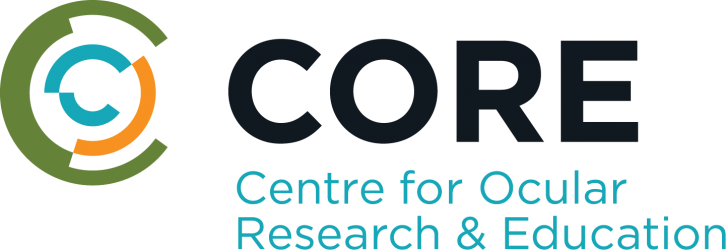WATERLOO, Ontario, October 7, 2024—Although an increasing number of multifocal contact lens options are available, global prescribing rates remain relatively low, primarily due to perceived fitting challenges in the category. The Centre for Ocular Research & Education (CORE) has focused Issue 80 of Contact Lens Update on providing insights and tips for eye care practitioners to build greater confidence in recommending multifocal lenses and to aid successful wearer adoption. The bi-monthly publication is available at no charge by visiting ContactLensUpdate.com.
“Multifocal soft contact lenses have been available for decades; however, their penetration into the market remains low, despite more advanced products being introduced over that time. These lenses are available in a wide range of powers, including astigmatic corrections, and in various materials. They also come in different replacement schedules, including daily disposable options,” said Jill Woods, Head of Clinical Research at CORE.
“These innovations present an opportunity to fit more of the presbyopic population than ever before, yet many patients are unaware of the possibility. Contact Lens Update Issue 80 is designed to help overcome the profession’s cautiousness—rooted in legacy concerns about fitting time and a fear of failure—by presenting new research that can be directly translated into better patient care and satisfaction.”
James S. Wolffsohn, Professor of Optometry and the Head of the School of Optometry at Aston University, writes the issue’s opening editorial. He presents a comprehensive overview of the BCLA CLEAR (Continued Learning Evidence-based Academic Reports) presbyopia initiative, providing an update on current knowledge and management of the condition.
Jill Woods is a global expert on presbyopia, myopia control, dry eye, and contact lens performance. With nearly 20 years of experience in presbyopia research and numerous publications in the field, she provides the feature article that examines how patients’ initial reactions to soft multifocal contact lenses can predict overall vision satisfaction and intention to purchase after one week of wear, which can be a strong indicator of success.
Doerte Luensmann, a Senior Clinical Scientist at CORE, contributes her expertise in clinical trial management for multisite global and domestic studies, assisting in study design and site management. Her clinical insight infographic offers a proactive guide for optimizing multifocal soft contact lens fitting, including determining full refraction and ocular dominance and ensuring patient satisfaction with follow-up communication and training.
The conference highlight is shared by Sabyasachi Goswami, a graduate student in Brain & Cognitive Sciences at the University of Rochester, who specializes in visual neuroscience with research interests in myopia, accommodation, and optical limitations of human vision. The study examines how various refractive zonal designs in multifocal contact lenses affect visual quality, including acuity, contrast sensitivity, and preference, using adaptive optics to suggest possible patient-specific customization.
In addition to a complete archive of back issues, ContactLensUpdate.com offers a resource library that provides no-cost professional tools, patient resources, images and video. It also houses complimentary technical training videos produced by International Association of Contact Lens Educators, plus an industry glossary. Industry professionals can access the latest issue directly from ContactLensUpdate.com or quickly sign up for email receipt of future issues.
The publication receives support from the educational arms of CooperVision and Johnson & Johnson Vision.
# # #
About the Centre for Ocular Research & Education (CORE)
The Centre for Ocular Research & Education (CORE) was established in 1988 at the University of Waterloo’s School of Optometry & Vision Science. Over the next three decades, the organization evolved from a three-person operation into a thriving hub of basic and applied research, collaborating with sponsors, agencies and academia on advanced biosciences, clinical research and education. Its uncompromising independence and results of the highest quality have been at the heart of many of the most prominent advances in eye health. Today, its team serves a range of ophthalmic sectors, including medical devices, ocular pharmaceuticals, digital technology and others, with a focus on the anterior segment. For more information, please visit core.uwaterloo.ca.
MEDIA CONTACTS
Lyndon Jones, Director, CORE
+1.519.888.4065 or lwjones@uwaterloo.ca





